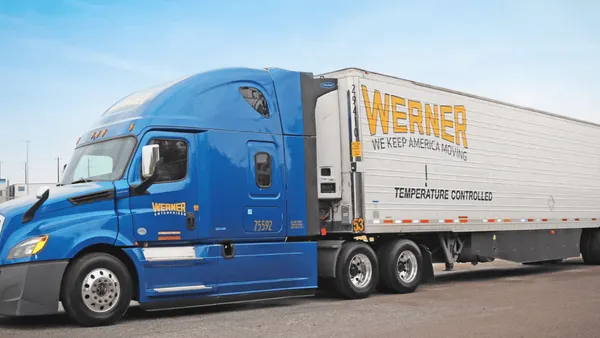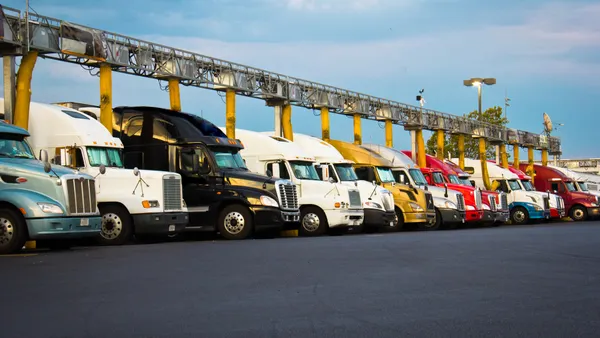Dive Brief:
- Old Dominion Freight Line CEO Greg Gantt said on Thursday that, while a focus on costs is the usual antidote to recession, it was crucial in the second quarter not to let customer service take a hit as a result. Gantt said service was adjusted during the COVID-19 pandemic in a way to improve revenue.
- The focus on service led to new business, Gantt told analysts during Old Dominion's Q2 earnings call. Quality of revenue was stable too, and competitors did not undercut Old Dominion on prices, which Gantt said showed market discipline. Volumes increased sequentially in May and June, and Gantt said many furloughed employees have come back to work. The company reported Q2 net income dropped 15% from the year before, despite what Gantt called "one of the most difficult periods I have experienced in my career."
- Gantt said Old Dominion reacted to the pandemic with a plan to save money and tighten productivity. The recessionary environment helped cut expenses for Old Dominion, mitigating the 15.5% revenue drop year over year. Salaries and wages dropped by $71.6 million and operating supplies dropped $47 million.
Dive Insight:.
The current competitive environment, made tougher by the pandemic, has helped the LTL carrier — usually one of the most profitable in the business — stand out from the pack, Gantt said.
Some customers left Old Dominion at the beginning of Q2 because of price sensitivity in the market, as April saw COVID-19 spread and shutdowns commence. But the carrier's revenue accelerated in June, and some customers are now coming back from other LTL clients, said SVP and CFO Adam Satterfield.
"Based on customer feedback, we believe the gap between us and our competition has widened in the current environment," said Gantt.
Gantt said Old Dominion also set a second-quarter cargo claims ratio of 0.1%, while maintaining on-time deliveries at 99%.
With shipments down 16.6% in Q2, tons per day down 12.1% and a 3.8% decrease in LTL revenue per hundredweight, Old Dominion focused operations, Gantt said. It set an operating-ratio record for the second quarter of a year, at 77.8%, an improvement of 10 basis points from 77.9% in Q2 2019. Gantt said that was accomplished by improving yield, managing variable costs and controlling discretionary spending. The LTL company took a drop in net income, reporting $147.8 million, down 15% from $174 million in Q2 2019.












